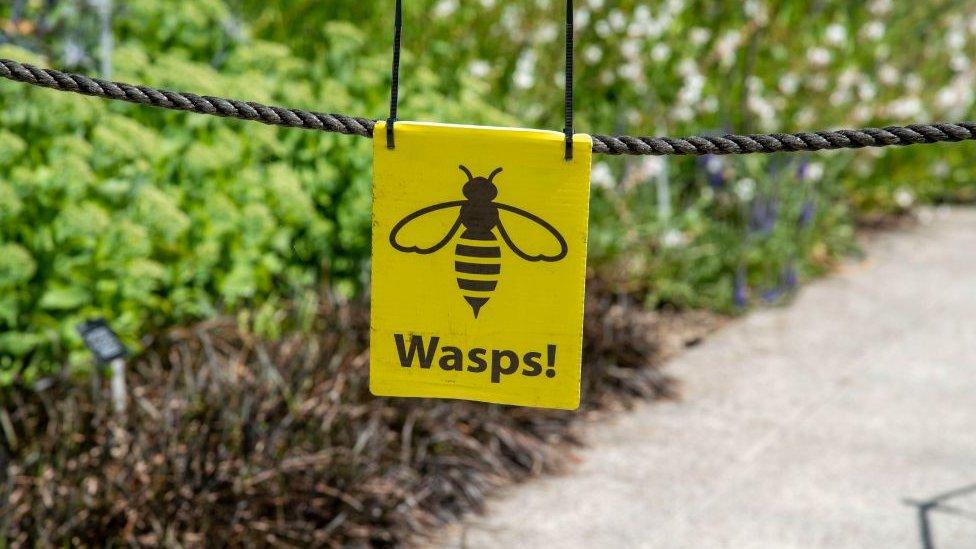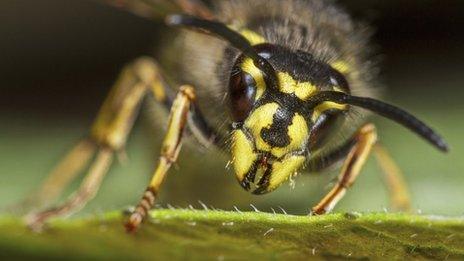New Zealand deploys insects to tackle wasp problem
- Published

New Zealand has some of the highest numbers of wasps in the world, and is now taking action to tackle them by introducing two insects from Europe.
The hover fly and wasp-nest beetle were given the green light by the country's Environmental Protection Authority.
They target the nests of wasps, which have overrun parts of the South Island.
The German wasp was introduced in New Zealand in the 1940s, external and the common wasp arrived in the late 1970s but is now widespread, the government says.
Tasman District Council, based in Richmond, South Island, had applied for permission to introduce the hover fly and wasp-control beetle as bio control agents.
In its application, the council said the region's honey dew-covered bean trees had the highest density of wasps in the world - with as many as 30 wasp nests per hectare.
So many thousands of wasps had disrupted the local ecosystem - killing honey bees and other insect life - and costing New Zealand's economy $133m annually in damages and management, local media reported.
The EPA said it had assessed the impact of introducing non-native species and deemed it to be safe.
"The reason why it's safe is because these two insects only attack wasps and that's been established both where they come from in Europe but also elsewhere," said Chris Hill, the EPA's general manager of hazardous substances and new organisms.
Tasman District Council's biosecurity and biodiversity co-ordinator Paul Sheldon said it was one of a number of ways to tackle the wasp problem. "It's not a silver bullet, but it's one tool in the tool box," he said.
You might also like:
Related topics
- Published19 September 2018
